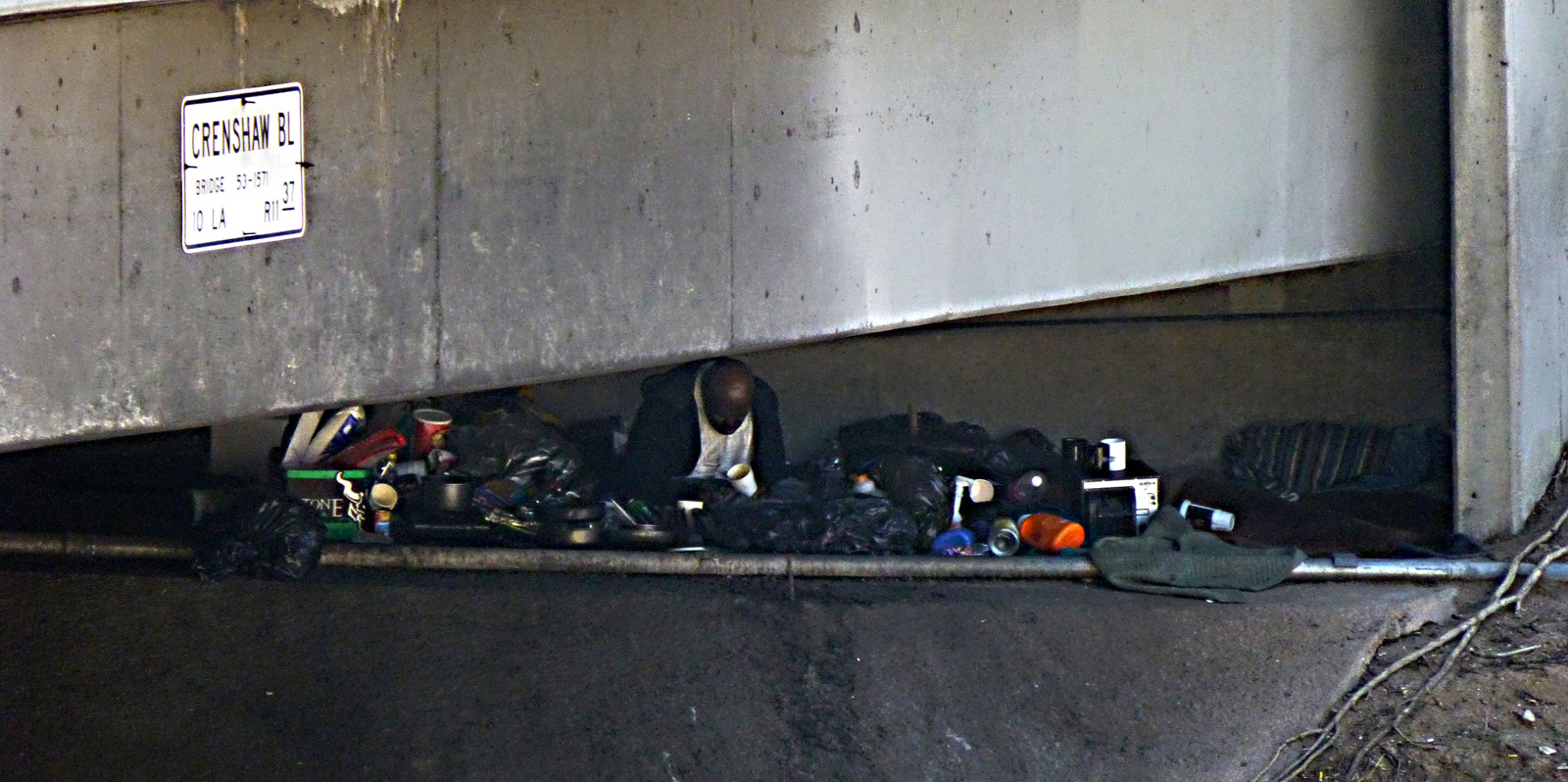LA's First Steps on Plans to End Homelessness

City Administrative Officer Miguel Santana released his office's first quarterly report November 7 on Los Angeles' ambitious new agenda to end homelessness. The most optimistic achievement was the passage of Proposition HHH the next day, committing the city to issue $1.2 billion in bonds to qualified developers to construct 10,000 units of permanent supportive housing over ten years.
For the rest, there are many promising accomplishments, but a few serious warning signs of trouble to come. Santana concedes at the outset that until this year, the city's main investment has been in crisis intervention, "largely relying on funding emergency shelter beds, with no clear path to long-term recovery."
In the short-term, this must still be the government's focus until new housing units begin to come online some years from now. The immediate priorities are to increase storage facilities, and create mobile showers and safe parking locations. It is just here, however, that the first quarter has been least successful.
Trouble Getting Infrastructure Off the Ground
At this time, there is only one location in the city to store homeless people's possessions. It is downtown in Skid Row. Three new ones were under consideration. The one in San Pedro was soon abandoned due to community opposition. One in CD9 on east Washington Blvd. was dropped because rehab costs were too high. And the third, a city-owned, long-vacant senior center in Venice, was approved, but that led to an uproar from the community. The city is considering some kind of mobile storage as an alternative.
If mere storage elicits this kind of opposition, it will be even harder to gain acceptance of long-term permanent housing units. The city is beginning that process by reviewing 12 locations it owns, and vetting and preapproving potential developers.
The city is also figuring out how and where to establish safe parking for people living in their vehicles. The city Municipal Code provision 85.02 prohibited living in a vehicle on city streets. This was struck down in 2014 by the Ninth Circuit Court as unconstitutional, in part because the enforcement test was seeing someone asleep in their car or that a car is filled with household goods. The court ruled that these criteria were too vague and could apply to anyone at some time. The City Council is trying to draft a new ordinance that sets legal limits to living in cars and RVs before going ahead to legalize them to park at night in the proposed Safe Parking locations. This could take a while.
And on the third priority, mobile showers, the San Francisco company LavaMae, which has succeeded with this in the Bay Area, is unwilling to accept government funding, so that project has begun in a very limited way. LavaMae uses converted buses for their showers. At this time, they offer services only on Tuesday and Wednesday at the Saint Francis Center, 1835 S. Hope Street; Tuesday outside the main library downtown; and at one location in Venice on Fridays.
Current Housing for the Homeless
For some years, the city has constructed about 300 units of homeless housing each year. Of the 28,464 homeless in the city, 9,031 are chronically homeless. At past rates, it would take 30 years to house this most needy subset. The good news is that more units are being produced now, even before anything comes from Prop HHH. In the last quarter, 131 permanent supportive housing units were completed and 377 more are under construction. Funding has been secured for 255 more. In addition, new donations have boosted the Supportive Housing Loan Fund from $30 million to $60 million.
The biggest success has been with veterans. Since February 2016, 1,688 homeless veterans have gotten permanent housing.
Prop HHH money is restricted to physical construction of housing or storage facilities. The hard core chronic homeless mostly suffer from mental illness, substance addiction, or physical disability. For permanent supportive housing to work, they need case management and psychiatric or medical intervention. This is the county's job. County Supervisors are considering putting a quarter cent sales tax on the March 2017 ballot to fund homeless services. This would generate $350 million a year.
LAPD's Role
The Los Angeles Police Department has 21 local police stations organized under four regional bureaus: Central, South, Valley, and West. The Southwest station is under South Bureau. Each of the four bureaus in October established a Homeless Outreach Partnership Endeavor (HOPE) team. The officers in the HOPE teams receive 40 hours of training, focused on prioritizing diverting arrested homeless persons from jail to treatment programs. An additional 763 officers have had Mental Health Intervention Training. Police also work to connect previously homeless people released from jail with services.
LAPD is working with LAHSA to create an online training program for working with the homeless that is to be completed by the end of December. It will be shared with the Port Police, Recreation and Parks, CHP, Sheriff's Dept., and the Fire Department.
Other Initiatives
The LA Public Library has been allocated $1.5 million for fiscal year 2016-2017 to buy two bookmobiles and one TechMobile (a computer lab on wheels) to serve homeless shelters and encampments.
LAHSA and United Way are in process of forming a 52-member advisory group, the Regional Homelessness Advisory Council, representing service providers, educators, business, LAPD, and city and county government agencies, plus 1 each from the 8 Service Planning Areas (2 from SPA4 because it contains Skid Row). The SPA elections took place in mid-November. The representative for SPA6 is Marion Sanders, Senior Manager for Community Services and Evaluation at the Homeless Outreach Program Integrated Care System (HOPICS).
The Department of City Planning has completed a study of imposing a linkage fee on developers to fund affordable or homeless housing. If adopted it would be expected to generate between $90 and $130 million a year.